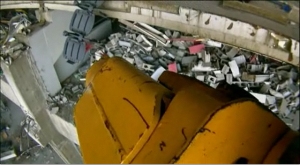Shooting a 3D documentary: how we’re syncing Canon 7Ds (VIDEO)
Yesterday’s post has created some confusion between syncing Canon 7Ds for 3D time lapse photography and syncing them for 3D videography.
I’ve edited to make clear yesterday’s post is for stills, and am now posting re. video.
To sync Canon 7Ds while shooting film footage for our first 3D documentary we plan to use the same infrared box systems we’ve rigged to sync our Canon Vixias, and slate our shots so we can sync in post.
I’ve outlined this technique in previous post for Vixias. For 7Ds we:
Set both cameras to self-time/infrared mode, which allows us to use an infrared remote (The Canon RC-5, in this case)
Position our box designed to receive any infrared signal and transmit it through a split cable to two infrared sensors.
Tape the infrared heads at the ends of the split cable to the infrared sensors on the two Canons and then use the remote to start them in sync.
And yes, because of the internal clock circuitry disparities we don’t get a 100 per cent accurate start and stop, as the cameras may not start recording on the same frame.
Our stereographer, Sean White, has found our 7Ds can be out of sync by one or two frames at 30 FPS.
To get around this we’re doing a physical slate at the start of each shot for our editor – this way he can toggle shots by a frame or two and sync from where the slate is.
Sean’s tested this system extensively.
He’s found that once you sync clips at the start they stay in sync for up to 12 minutes straight – much more time than we need to get the types of shots we’re going to capture with the 7Ds.
Test footage:
VIDEO




